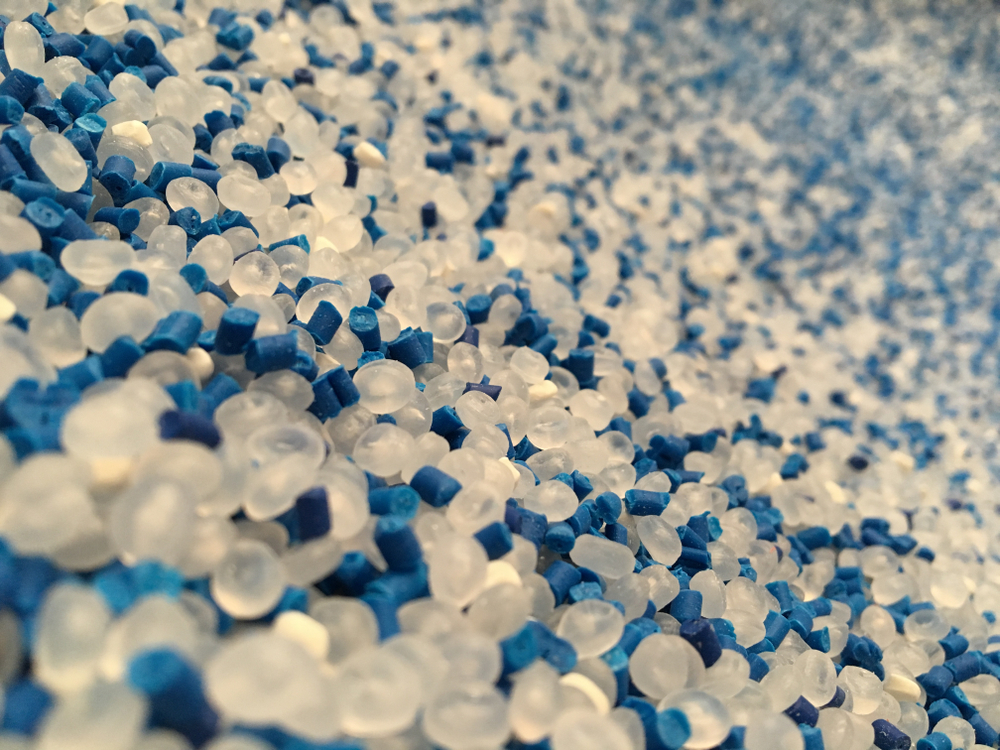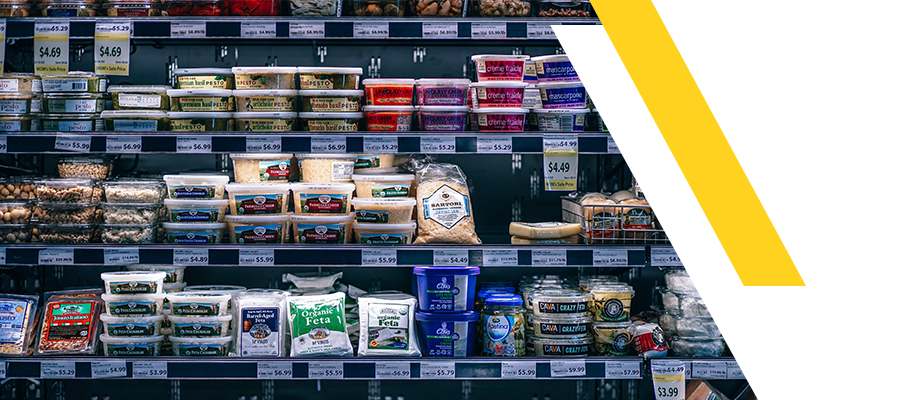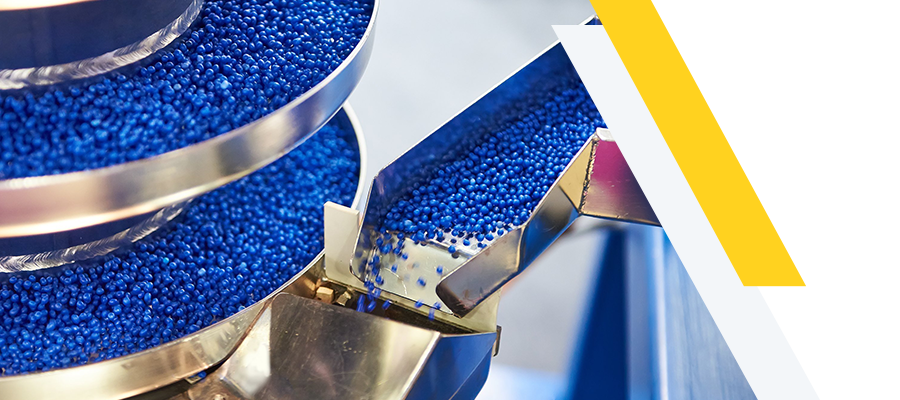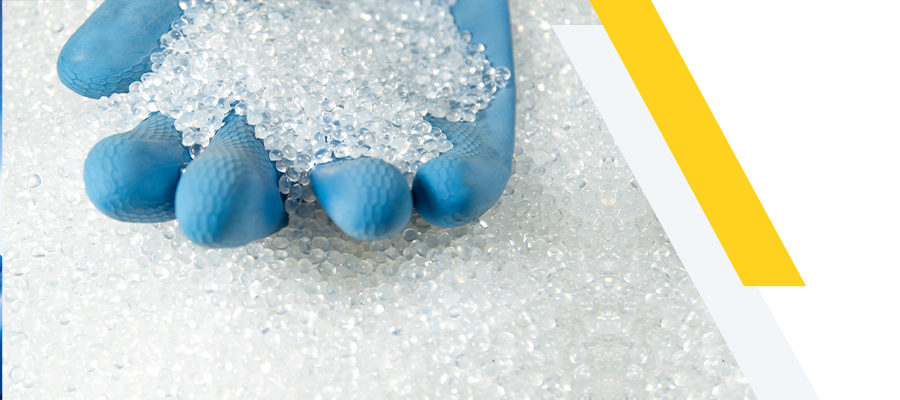
Benefits of Flexible Packaging For Food Products

It’s enough to know that the flexible packaging market size is expected to reach 200.5 billion dollars by 2025 at a CAGR of 4.50% during the period between 2022 and 2025. Although the pandemic has affected most of the industries, the food packaging industry has become the primary beneficiary of this pandemic.
In this article we will help you to elevate your flexible packaging performance step by step starting from selecting the perfect raw materials for your food applications. You can also find answers to all the following questions:
- What is the secret behind shifting the packaging industry toward flexible packaging?
- What are the different food packaging functions?
- How to select the optimal material for each Function?
- How to Protect your food products from damage and environmental effects (moisture temperature variations - light)
- What are GAP Polymers recommended grades for your food application?
1. Why is flexible packaging for food products shifting the packaging industry?
There is no one secret behind this shift; the main reason is that technology is changing rapidly. That’s why customers are searching for technological innovations and reasonable economics.
Flexible packaging has achieved this difficult equation, let’s explore how flexible packaging becomes the most suitable for food packaging?
Food flexible packaging offers many advantages for the food industry such as:
- Environment friendly
Flexible packaging goes hand in hand with sustainability. It requires less energy and less water for the manufacturing process. That's why it has become preferred over rigid packaging.
- Longer shelf-life
This type of packaging has resistance to moisture and heat. It also has perfect barrier properties. These characteristics can extend the shelf life as it keeps UV rays and toxins away. These are not only the advantages of the flexible packaging which takes us to the next question:
2. What are the different food packaging functions?

There are many functions for food packaging. Take a look at these:
- Protection & Preservation
The first function for packaging is to prevent the food from damaging and to reduce chemical changes.
- Containment
The main purpose for packaging is to keep the physical form of the product. It also involves maintaining the integrity of the product during the entire process that starts from filling and sealing to the transportation step.
- Unitization
Here you aim to group individual products into a single unit to distribute and market easily and to be easy for customers to purchase. This reduces the number of handlings during the distribution process.
- Information & Branding
Packaging is considered as the main media between the brand and its customers. So, you have to choose the packaging type that can help customers to know more about the brand and the product's info such as ingredients.
- Cost effectiveness
The aim is not only to contain food products but to contain them in the most cost-effective way possible. You must consider satisfying the consumers’ desires and the industry requirements.
3. How to select the optimal material for each Function?
Flexible packaging meets a wide range of packaging main functions, it offers a lot of benefits such as:
- Customization & creative designs
The material that is used in flexible packaging allows manufacturers to create innovative package designs. This advantage can improve the marketing values for the companies. We can say “thinking out of the box” principle matches the flexible packaging.
- Production efficiency
Flexible packaging saves more material than rigid traditional packaging. It also saves the energy that the machine consumes.
- The optimum quality
With flexible packaging you can tailor the material to suit your needs and the products’ specifics without affecting the quality.
4. How to select the optimal material for your flexible packaging product?
Selecting the right material for your project really matters. That's why you have to consider many variables while choosing the material:
- Choosing the type of material that will be suitable for the product from the wide range of flexible packaging material types such as:
- Wraps
- Roll stock
- Bags
- Liners
- You have to be specific about the cost of the material.
- The environmental impact is also an important variable to consider.
- You have also to think about labeling and printing on your products.
5. How to Protect your food products from damage and environmental effects?
By choosing the right plastic raw materials, you can block harmful UV rays. You will also protect your product from moisture, grease, contamination, oxygen, and grease.
With flexible packaging you can also increase the shelf life of your products.
6- What are GAP Polymers recommended grades for your food application?
When it comes to Flexible packaging, you will find yourself choosing between specific materials including Polyethylene, Polypropylene, polystyrene, and Polyvinyl chloride. GAP Polymers will improve the selection process for you.
Recommended Grades:
| LDPE 4025 | It is the best grade for Flexible packaging such as shrink film, food packaging films and blow films. It can be easily processed on all types of extruders that are designed for PE materials. |
| LDPE 1952 | it is recommended for shrink film applications as it contains slip agent and anti-blocking additives. It also offers perfect mechanical properties. It will be perfect for bags and Pouches. |
| LLDPE FS253S | This grade is designed for blown film applications. It offers high transparency and good extrusion characteristics. |
| LLDPE 1220P | It is suitable for extrusion film applications and general blown film applications. It is used for food and specialty packaging. |
| PS330 | This grade can be used in thermoforming applications and dairy products. It offers good physical properties. |
Suggested Blogs

Exclusive vs. Non-exclusive Distributor
GAP Polymers Team
Have you ever wanted to know the difference between the exclusive and the non-exclusive polymer distributers, GAP polymers will help you to know the main differences between them.

An Overview of Polypropylene Thermoforming Process
GAP Polymers Team
PP is the second most popular plastic resin in the world used across many industries. Thermoforming PP has become a process of choice for many manufactures due to its versatility low cost , and more.

Weekly Plastic News & Resins Pricing
GAP Polymers Team
A weekly coverage of all you need to know about the international plastic industry including resin pricing, trends, market insights, and more.

A Deeper Look Into Plastic Manufacturing Industry
GAP Polymers Team
Keep up with the rapid changes of the plastic manufacturing industry and dive deep into what shapes the polymer industry and how to choose the best raw material supplier for your business.

Polymer Industry Updates: What's coming up in 2023?
GAP Polymers Team
2023 is a critical year in the polymer industry at all levels. Global polymers market size is expected to grow finally after the economic recovery from the pandemic.

Top Plastic Raw Material Suppliers
GAP Polymers Team
The polymer industry is facing continues challenges and choosing the best supplier is getting harder. Look no further and explore the full list of the top plastic raw material suppliers.